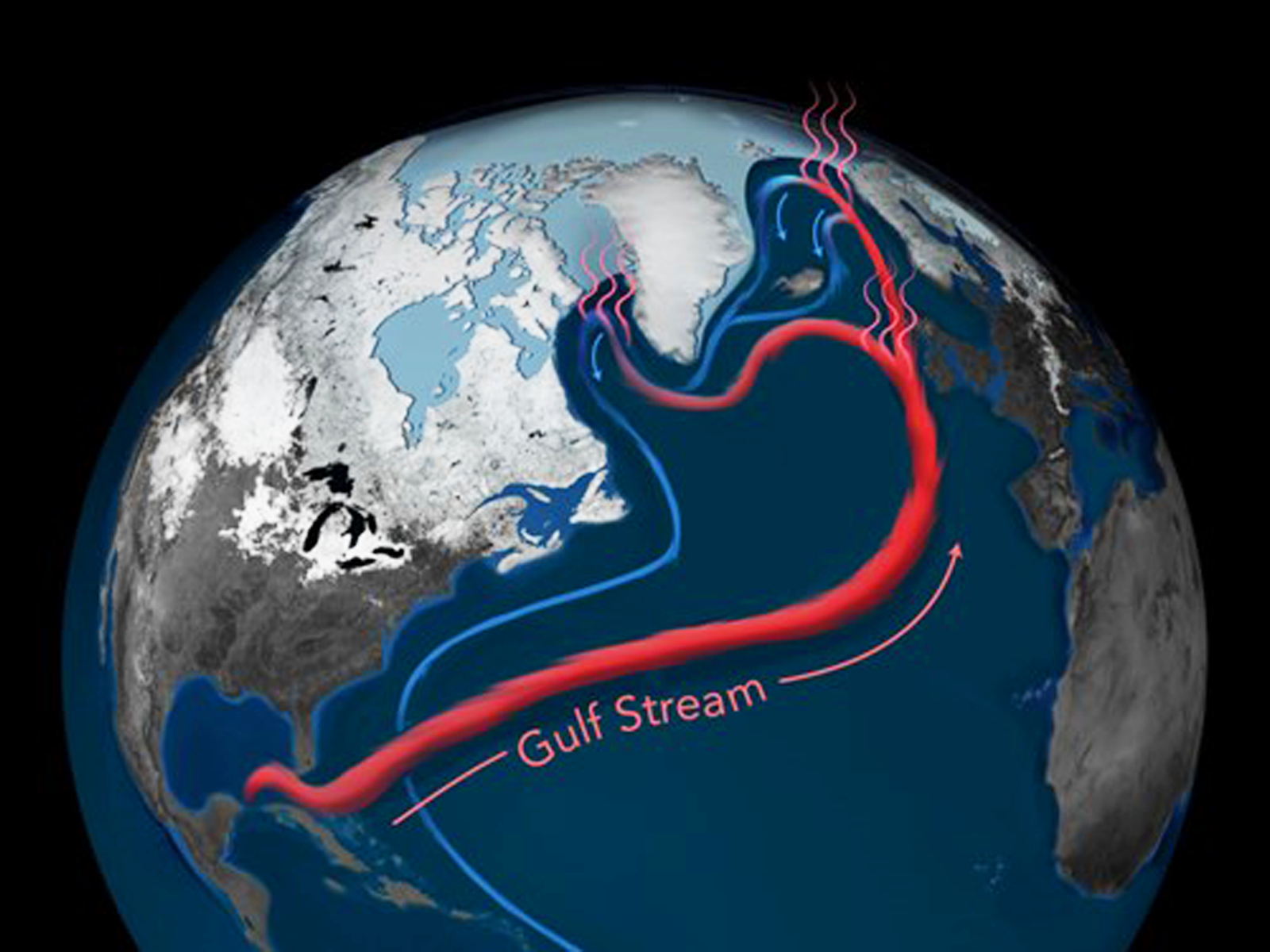Freshwater Flux Feedback Lengthens Atlantic Meridional Overturning Circulation Variability
Interactive freshwater flux works to prolong density anomalies over deep water formation areas in the North Atlantic

Surface freshwater fluxes influence variability in the Atlantic meridional overturning circulation.
The Science
The Atlantic meridional overturning circulation (AMOC) is perhaps the most important global ocean circulation feature that transports heat poleward and regulates the climate in North America and Europe. How variability in surface freshwater fluxes (FWF, including evaporation, precipitation, runoff, and sea ice melting) influences AMOC variability remains poorly understood. This study designed an innovative experimental approach to freeze the year-to-year variation in FWF, disabling FWF feedback during lifecycles of low-frequency AMOC variability. With the feedback circuit of the freshwater flow freely operating, temperature change-induced convection anomalies in the Labrador Sea (LS) are extended and increase the periodicity of the AMOC variability.
The Impact
Through purposefully designed experiments, researchers identified the role of the interactive surface freshwater flux and the associated ocean circulation and coupled processes in regulating the AMOC periodicity for the first time. The work also underscores the importance of faithfully representing the atmosphere-ocean-sea ice interaction over the temperate and high latitudes for capturing fundamental variability in the climate system.
Summary
The long-term variability of the AMOC has a profound impact on the Earth’s climate. However, the extent to which FWF variability regulates AMOC periodicity remains largely elusive. Researchers use a partial-coupling technique to isolate the contribution of FWF variability to the low-frequency AMOC variability. In the absence of interactive FWF, temperature anomalies moving around subpolar whirl patterns dominate the density anomalies important to deep convection in the LS. Salinity anomalies then behave like a passive tracer and work to partially compensate for the temperature effect. With interactive FWF enabled, convection in the LS first initiated by temperature anomalies, is reinforced and extended by salinity changes. As a result, the forcing for AMOC variation can persist over a much longer time, lengthening the periodicity of the AMOC variability on multi-decadal timescale. Both local and remote mechanisms contribute to the more persistent deep convection in the LS. Evaporation-induced salinity changes extend and reinforce local density anomalies initialized by temperature changes. Salinity anomalies in the upstream Irminger Sea caused by sea ice melting anomalies can also propagate into the LS and affect LS density anomalies.
PNNL Contact
Jian Lu, Pacific Northwest National Laboratory, jian.lu@pnnl.gov
Funding
FL and YL were supported by the Marine S&T Fund of Shandong Province for Pilot National Laboratory for Marine Science and Technology (Qingdao) (No. 2022QNLM010301-01) and the National Natural Science Foundation of China (NSFC; 41906002, 91858210, 42230405, and 41976006). JL, YOK, and CF are supported by the Department of Energy (DOE) Office of Science as part of the Regional and Global Model Analysis (RGMA) Program Area (DE‐SC0019492). This research used resources of the National Energy Research Scientific Computing Center (NERSC), a high-performance computing National User Facility operated by Lawrence Berkeley National Laboratory for the DOE Office of Science, operated under Contract No. DE-AC02-05CH11231 using NERSC award ERCAP 0017151.
Published: January 13, 2023
Liu, F., J. Lu, Y.-O. Kwon, C. Frankignoul, and Y. Luo. (2022) “Freshwater Flux Variability Lengthens The Period Of The Low-Frequency AMOC Variability,” Geophysical Research Letters, 49(20), e2022GL100136. [DOI: 10.1029/2022GL100136]